Discover the Best Places to Visit in the City of Lights - Paris
Discover the best attractions in Paris—from the Eiffel Tower to secret rooftops. Explore Paris like never before in this ultimate travel guide.
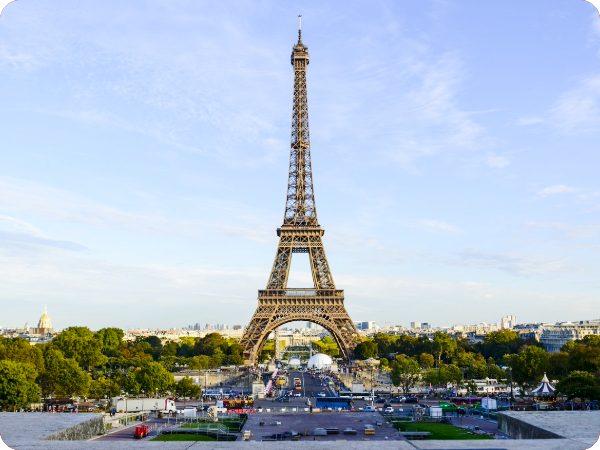
🗼 Eiffel Tower – Paris’s Iconic Symbol :
The Eiffel Tower, or La Tour Eiffel, is one of the most renowned attractions in Paris and a universal symbol of France. Designed by Gustave Eiffel and completed in 1889 for the World’s Fair, the 330-meter iron structure was initially met with criticism but soon became the crown jewel of Paris sightseeing.
Every year, over 7 million visitors make their way to this iconic monument, making it the most visited paid monument in the world. Whether you’re admiring it from the Champ de Mars or standing atop the summit with a panoramic view of the Seine, Montmartre, and beyond, the Eiffel Tower never fails to awe.
There are three visitor levels. The second floor is ideal for photography and fine dining at restaurants like Le Jules Verne. For a higher thrill, the summit offers a glass-walled elevator experience that’s both thrilling and cinematic. You can also climb 674 steps to the second floor if you want a workout with a view.
Pro tip for the Paris travel guide: Visit in the early morning or around dusk for fewer crowds. During summer evenings, the tower sparkles every hour with 20,000 twinkling lights—a magical show not to be missed.
As one of the top things to do in Paris, the Eiffel Tower offers not just a spectacular view, but a historical journey into French innovation and pride.
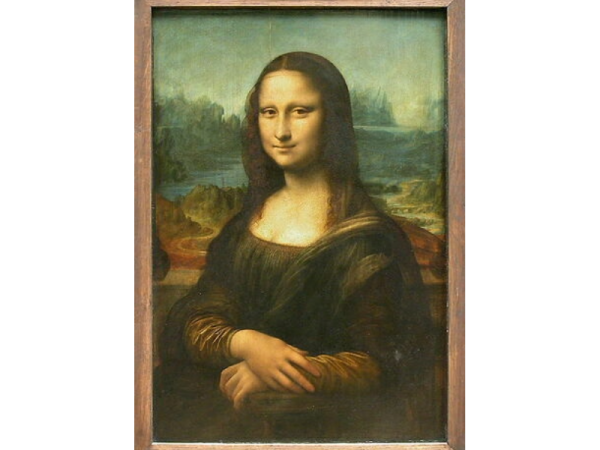
🖼 The Louvre Museum – Art, History, and the Mona Lisa :
When discussing the most iconic attractions in Paris, the Louvre Museum (Musée du Louvre) easily tops the list. Located on the right bank of the Seine River, it’s not only the largest art museum in the world but also a historic monument deeply embedded in the cultural fabric of France.
Originally built as a fortress in the late 12th century by King Philip II, the Louvre was transformed into a royal palace and then into a public museum during the French Revolution in 1793. Today, it houses more than 35,000 works of art, spanning from prehistoric times to the 21st century.
The most famous attraction here is undoubtedly Leonardo da Vinci’s Mona Lisa, whose enigmatic smile draws millions of visitors each year. But the museum’s treasures go far beyond this masterpiece. From the Venus de Milo to the Winged Victory of Samothrace, Egyptian mummies to Islamic art, the Louvre offers an unparalleled journey through global history and creativity.
The glass Louvre Pyramid, designed by architect I.M. Pei and added in 1989, stands as a striking modern contrast to the classical palace and is one of the most photographed spots in Paris. Whether you’re an art aficionado or a casual tourist, the Louvre delivers a visual and emotional experience like no other.

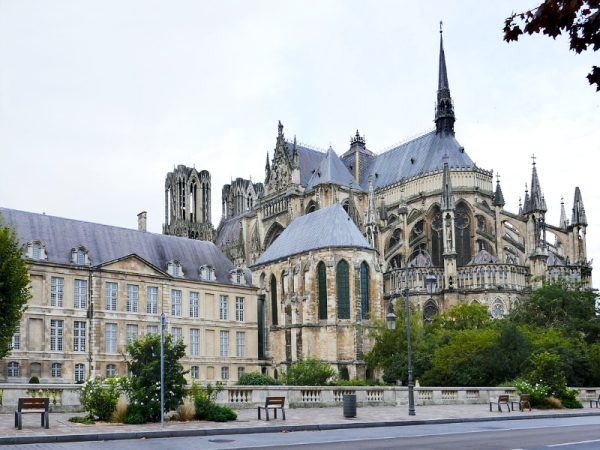
🕍 Notre-Dame Cathedral – Gothic Grandeur and Spiritual Soul :
The Notre-Dame Cathedral stands as a Gothic masterpiece and a spiritual symbol of France. Located on the Île de la Cité in the heart of Paris, it has drawn millions of visitors annually, making it one of the most iconic attractions in Paris.
Construction began in 1163 under Bishop Maurice de Sully and took over 180 years to complete. Its soaring spires, intricate stone carvings, and famed flying buttresses showcase the height of medieval architecture. The west façade, with its rose windows and twin towers, is particularly stunning and remains a major highlight of Paris sightseeing.
Inside, the cathedral offers a quiet, awe-inspiring atmosphere with stained glass windows filtering colored light over centuries-old stone. The South Rose Window, dating back to the 13th century, is especially breathtaking. Notre-Dame is also steeped in literary fame, immortalized in Victor Hugo’s The Hunchback of Notre-Dame.
Though the cathedral suffered a devastating fire in April 2019 that destroyed its roof and central spire, restoration efforts are ongoing, and its spirit remains unshaken. The French government aims to reopen the cathedral by December 2024, just ahead of the Paris Olympics.
Visitors can still explore the surrounding area, including the nearby Shakespeare and Company bookstore, Pont Saint-Michel, and Square Jean XXIII, which offers beautiful views of the rear façade.
📌 Pro tip: Don’t miss the crypt beneath the cathedral, which showcases the archaeological history of ancient Paris (Lutetia), offering another layer to your Paris travel guide.
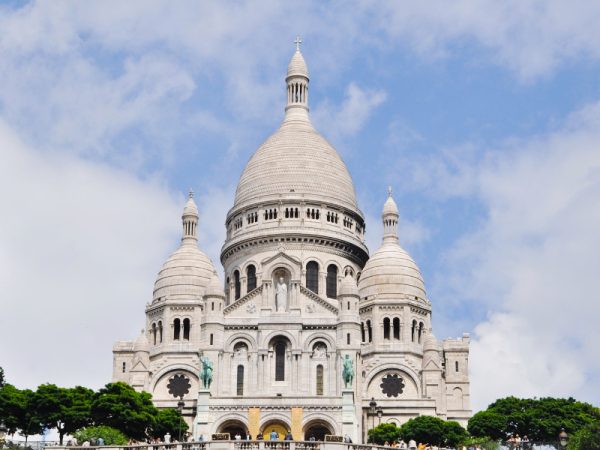
🎨 Montmartre – The Bohemian Hill of Paris :
Perched atop a hill in the 18th arrondissement, Montmartre is one of the most romantic and culturally rich attractions in Paris. This historic neighborhood has long been a haven for artists, writers, and dreamers who shaped the Paris we know today.
At its heart is the stunning Sacré-Cœur Basilica, a white-domed church visible from across the city. Climb the dome for a panoramic view of Paris, or simply enjoy the artistic vibe around Place du Tertre, where street painters and sketch artists showcase their talents — a scene reminiscent of its bohemian past.
In the late 19th and early 20th centuries, Montmartre was home to artistic giants like Pablo Picasso, Vincent van Gogh, Henri Toulouse-Lautrec, and Modigliani. Cafés like Le Consulat and La Maison Rose still echo the spirit of that era and are popular stops on any Paris travel guide.
For a quirky cultural touch, visit the Wall of Love (Le Mur des Je t’aime), where “I love you” is written in over 250 languages. You’ll also find Montmartre Cemetery, the final resting place of legendary figures such as Émile Zola and Dalida.
The area has a unique charm — narrow cobbled streets, vineyards (yes, Paris still has a vineyard!), and even an old windmill. It feels like a small village within the city.
📌 Travel Tip: Explore Montmartre at sunrise to beat the crowds and capture the true essence of this magical neighborhood.
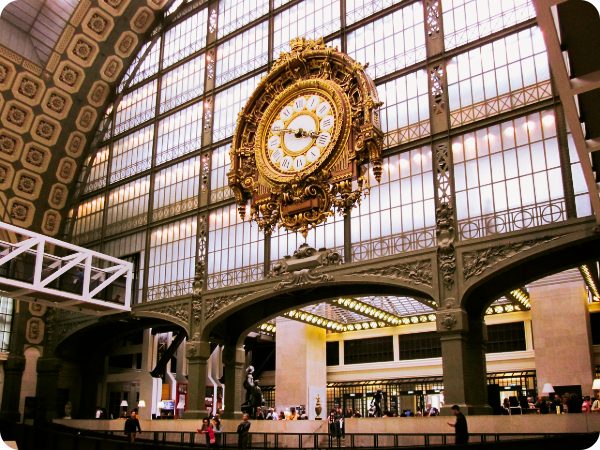
🎨 Musée d’Orsay – Impressionist Masterpieces
The Musée d’Orsay is one of the most elegant and fascinating attractions in Paris, especially for lovers of Impressionist and Post-Impressionist art. Housed in a stunning Beaux-Arts railway station built between 1898 and 1900, the museum itself is a masterpiece of architecture, with its ornate ironwork, grand clock, and light-filled interior.
Opened in 1986, the museum bridges the gap between the Louvre’s classical collections and the modern works found at the Centre Pompidou. It is best known for holding the world’s largest collection of Impressionist and Post-Impressionist art, featuring legendary names like Claude Monet, Édouard Manet, Edgar Degas, Pierre-Auguste Renoir, Vincent van Gogh, and Paul Cézanne.
Among its most iconic pieces are Monet’s Blue Water Lilies, Van Gogh’s Starry Night Over the Rhône, and Degas’ The Little Dancer of Fourteen Years. Each gallery is thoughtfully curated, allowing visitors to immerse themselves in the colors, light, and emotion that define 19th-century French art.
The museum also includes sculptures, photography, decorative arts, and architectural models, offering a rich and comprehensive view of French culture during one of its most artistically vibrant eras.
📌 Travel Tip: Visit during weekdays or early morning hours to enjoy the galleries with fewer crowds. Don’t miss the spectacular view of the Seine through the museum’s giant clock face!
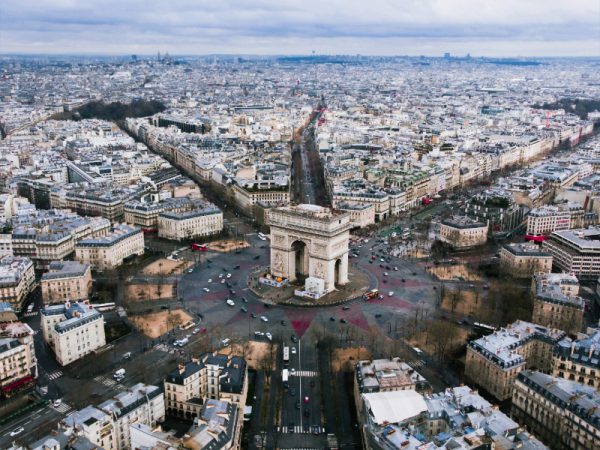
🏛️ Arc de Triomphe & Champs Élysées – Parisian Grandeur Unfolded
The Arc de Triomphe stands proudly at the western end of the Champs-Élysées, one of the most famous and elegant avenues in the world. Commissioned by Napoleon Bonaparte in 1806 after his victory at Austerlitz, the monument honors those who fought and died for France in the French Revolutionary and Napoleonic Wars. Underneath its arch lies the Tomb of the Unknown Soldier, a powerful symbol of remembrance lit by an eternal flame.
Standing 50 meters tall, visitors can climb the 284 steps (or take the elevator partway) to the top of the Arc for a 360-degree panoramic view of Paris. The view from the top reveals the geometric city planning of Baron Haussmann and a stunning perspective of twelve grand avenues radiating from the Place Charles de Gaulle, including the Champs-Élysées itself.
The Champs‑Élysées stretches for nearly two kilometers, connecting Place de la Concorde with the Arc. This iconic boulevard is lined with theaters, flagship stores, cafés, and historic buildings. Whether you’re shopping at Louis Vuitton, enjoying a coffee at Le Fouquet’s, or watching the Bastille Day parade, this avenue reflects the stylish, cultural core of Paris.
✨ Fun Fact: The final stage of the Tour de France finishes at the Champs‑Élysées, showcasing the avenue’s international fame.
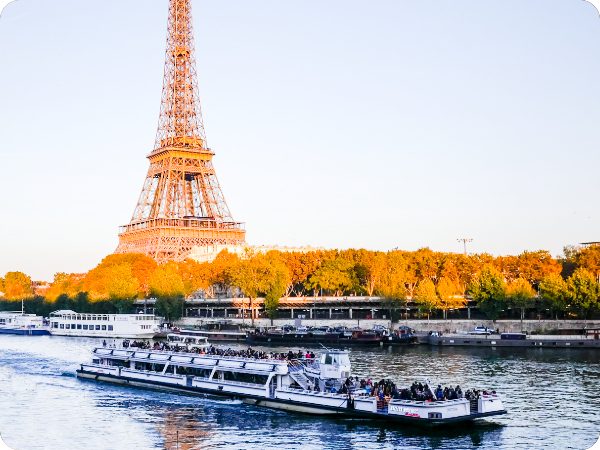
🌊 The Seine River – Romantic Walks and Cruises Through Paris
The Seine River is more than just a waterway—it is the heart and soul of Paris. Meandering through the city from east to west, the Seine passes many of the most iconic attractions in Paris, offering unforgettable views of landmarks such as Notre-Dame Cathedral, the Louvre, the Eiffel Tower, and Pont Alexandre III.
A walk along the quais of the Seine is one of the most romantic things to do in Paris, especially during the golden hours of sunset. Couples stroll hand in hand, artists sketch the skyline, and booksellers set up their iconic green boxes along the banks.
For a more immersive experience, hop aboard a Seine River cruise. Options range from simple sightseeing boats to luxury dinner cruises with champagne and live music. These cruises provide a magical perspective of the city, particularly when Paris lights up at night and reflects on the water—a sight that inspired poets and painters alike.
The Île de la Cité and Île Saint-Louis, two natural islands in the middle of the Seine, offer quiet charm and historical significance, making them ideal for exploration. The pedestrian-only Pont des Arts and other nearby bridges are also prime spots for photography and reflection.
📌 Travel Tip: Opt for a nighttime Bateaux Mouches cruise to see illuminated monuments in all their glory. Don’t forget a light jacket—even summer nights can be cool on the water.
Image Idea: A sunset or nighttime Seine River cruise with the Eiffel Tower glowing in the background.
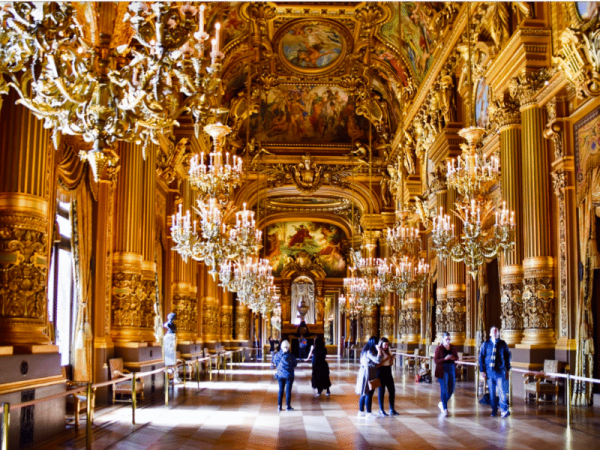
🎭 Opéra de Paris (Palais Garnier) – An Icon of French Elegance
The Opéra de Paris, more formally known as the Palais Garnier, stands as one of the most magnificent opera houses in the world. Located in the heart of Paris’s 9th arrondissement, it is not only an architectural marvel but also a living testament to the grandeur of French cultural heritage.
Commissioned by Emperor Napoleon III and designed by architect Charles Garnier, the Opéra de Paris was inaugurated in 1875. The building combines Baroque, Renaissance, and Neo-Classical elements, creating a richly decorative facade that draws thousands of admirers every year.
Once inside, visitors are greeted by a grand marble staircase, golden balconies, and a ceiling painted by Marc Chagall. The iconic seven-ton chandelier hanging over the auditorium is a centerpiece of this historical structure. The theater still hosts classical performances, ballet, and contemporary works, making it a cultural gem for both locals and tourists.
The Palais Garnier is also famously associated with Gaston Leroux’s novel “The Phantom of the Opera”, adding a layer of mystery to its already dramatic presence. Whether you’re taking a guided tour or attending a performance, the Opéra de Paris offers an experience unlike any other in the city.
As a cornerstone of the art and culture scene in Paris, visiting the Opéra de Paris is more than sightseeing—it’s a walk through time, elegance, and the beating heart of French musical artistry.
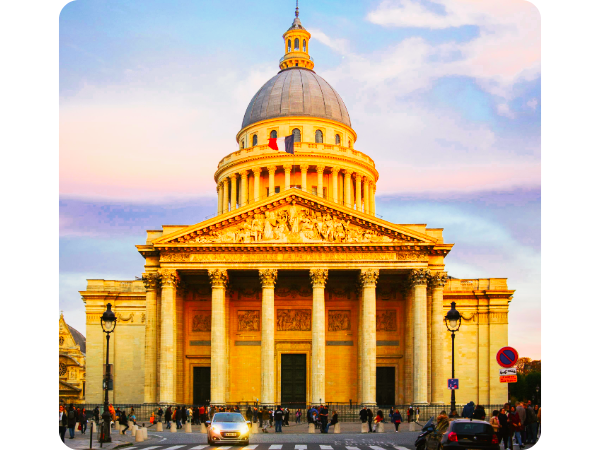
🏛️ Panthéon – Honoring France’s Greatest Minds
In the heart of the Latin Quarter stands the Panthéon, one of the most historically rich attractions in Paris. Built in the 18th century, it was initially a church dedicated to Saint Genevieve but later transformed into a mausoleum for France’s greatest minds. Visitors can explore the crypts of notable figures like Voltaire, Rousseau, Marie Curie, and Victor Hugo—people who shaped French identity and world culture.
The neoclassical architecture with its massive dome and elegant columns draws admirers of design and history. Inside, the majestic frescoes and the Foucault Pendulum showcase the country’s scientific and artistic progress. For many, a visit to the Panthéon isn’t just about sightseeing—it’s a deep dive into the soul of French heritage.
Climbing to the dome reveals a stunning panoramic view of the Paris skyline. The Panthéon also offers quiet reflection, especially when compared to the more crowded attractions in Paris. It’s a place where reverence, history, and culture converge, perfect for curious travelers and those seeking inspiration.
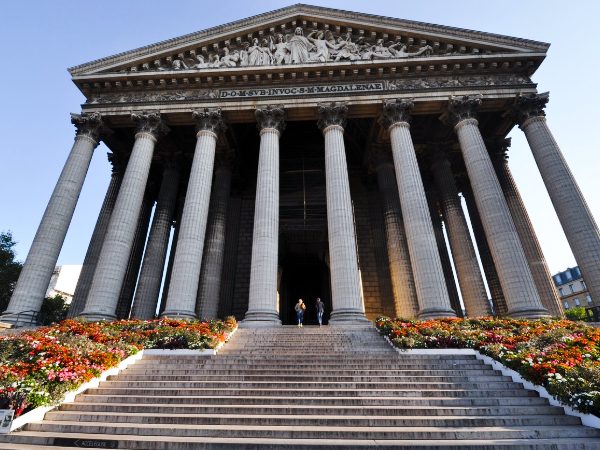
⛪ Église de la Madeleine – Parisian Grandeur Meets Roman Inspiration
Located in the 8th arrondissement of Paris, the Église de la Madeleine is a unique church that stands out with its grand Roman temple-style architecture. At first glance, visitors might mistake it for a classical structure in Rome, thanks to its 52 towering Corinthian columns and majestic pediment sculptures.
Originally intended by Napoleon as a temple to the glory of his army, the design and purpose of the building changed several times during its construction. Eventually, it was consecrated as a church in 1842. Its history is tightly woven with the turbulent shifts in French politics—from the Revolution to the restoration of the monarchy.
Inside, the church boasts a richly decorated nave, stunning frescoes, and an atmosphere of solemn grace. It is also well-known for its exceptional classical music concerts, held frequently and featuring world-class choirs and organists. Unlike traditional Gothic churches in Paris, Église de la Madeleine feels serene and stately—an architectural homage to France’s neoclassical ambitions.
The church has also served as the site of numerous state funerals, including that of Chopin and Josephine Baker, adding to its historical importance.
In the context of French art and culture, Église de la Madeleine stands as a symbol of spiritual endurance and artistic beauty. A visit here is not just about religion—it’s a dive into the evolving narrative of French identity.
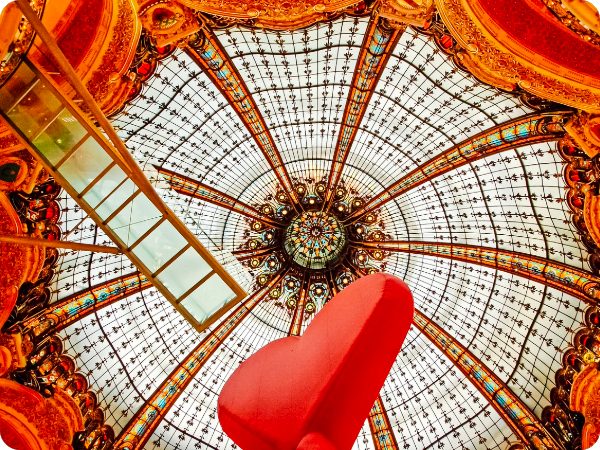
🏙️ Galeries Lafayette Rooftop – A Secret View Over Paris
Among the lesser-known but visually stunning attractions in Paris is the Galeries Lafayette Rooftop. Perched above the iconic department store on Boulevard Haussmann, this free rooftop terrace offers one of the best city views. From here, you can spot the Eiffel Tower, Opéra Garnier, Sacré-Cœur, and rooftops that make Paris so enchanting.
Many tourists miss this hidden gem while exploring the major attractions in Paris, but the rooftop is a serene place to rest, snap incredible photos, and enjoy the skyline without long lines or ticket fees. Visit during sunset for a magical golden-hour experience.
While you’re there, don’t skip the store’s legendary Art Nouveau stained-glass dome and its stylish food court. The rooftop is easy to access and provides a refreshing escape in the middle of your urban adventure.
If you’re crafting a list of essential attractions in Paris, Galeries Lafayette’s rooftop should definitely be on it—elevated in both location and experience.
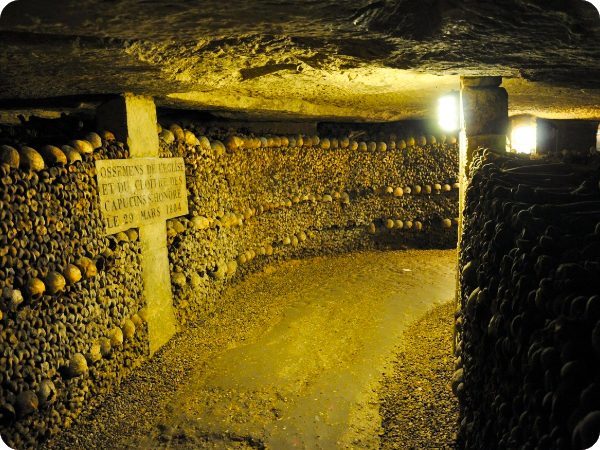
🕯️ Paris Catacombs – Underground Paris
Beneath the romantic streets of Paris lies a chilling yet fascinating world—the Paris Catacombs, a subterranean ossuary holding the remains of over six million Parisians. Far removed from the glitz and glamour of the Eiffel Tower or Champs‑Élysées, the Catacombs reveal a darker chapter of the city’s history.
Created in the late 18th century to combat the city’s overflowing cemeteries, bones were moved underground into an intricate network of abandoned limestone quarries. These tunnels, stretching over 200 miles, were carefully arranged with skulls and femurs forming hauntingly artistic walls. Today, only a small portion is open to the public—about 1.5 km—but it is enough to stir the imagination.
The entrance at Place Denfert-Rochereau leads you 20 meters underground, where dim lighting and narrow passageways create an eerie atmosphere. Carved signs and ancient inscriptions guide you through the catacombs, culminating in the chilling phrase: “Arrête! C’est ici l’empire de la Mort” (“Stop! Here is the empire of the dead”).
For those looking for unique attractions in Paris, the Catacombs offer a rare blend of history, art, and mystery. Advance booking is strongly recommended as only a limited number of visitors are allowed per day to preserve the site.
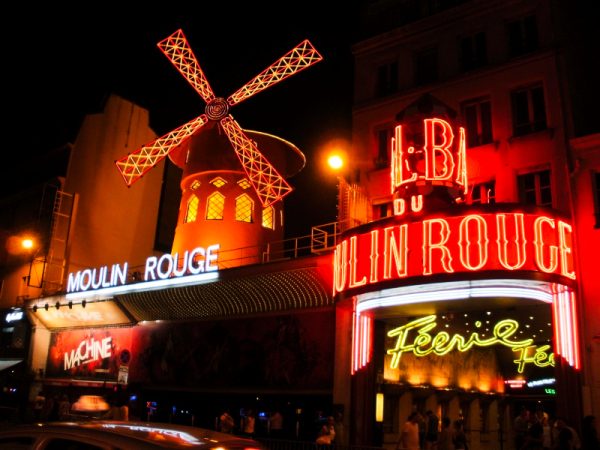
🎭 Moulin Rouge – The Spirit of Bohemian Paris
When it comes to iconic attractions in Paris, few names evoke the romance, energy, and flamboyant history of the city like the Moulin Rouge. Nestled at the foot of the Montmartre hill in the 18th arrondissement, this legendary cabaret is more than just a venue—it’s a symbol of Parisian nightlife and Belle Époque decadence.
Founded in 1889 by Joseph Oller and Charles Zidler, the Moulin Rouge—meaning “Red Mill”—was instantly recognizable for its bright red windmill perched atop its roof. It quickly became the heart of a new entertainment style that blended music, dance, comedy, and artistic expression, attracting artists like Toulouse-Lautrec, who immortalized its performers in his iconic posters.
The Moulin Rouge is considered the birthplace of the modern can-can dance, a high-energy, high-kicking performance that mesmerized audiences and challenged the social norms of the time. Today, visitors can still experience this electrifying dance in the venue’s world-famous show, “Féerie”, which features over 60 dancers, elaborate costumes with feathers and rhinestones, and theatrical lighting that dazzles the senses.
A night at the Moulin Rouge is one of the most unforgettable attractions in Paris. Whether you choose the dinner and show experience or just the performance, you’ll be swept into a world of glamour, artistry, and timeless Parisian spirit. Though modernized for today’s audience, the venue remains faithful to its roots—honoring the creativity, passion, and scandalous charm that made it famous.
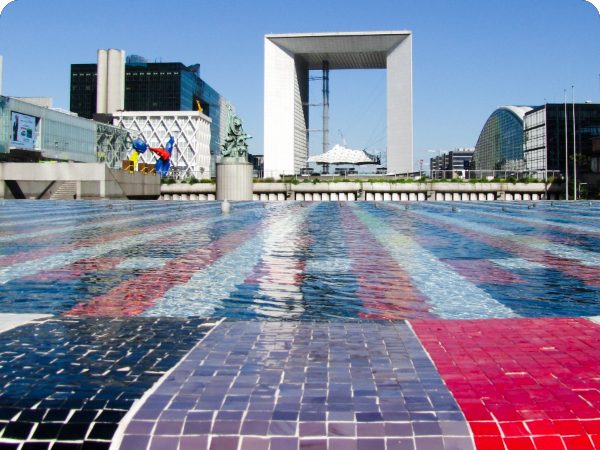
🏙️ La Défense – Where Modern Paris Begins
Paris isn’t just about history and romance—it’s also about innovation and modern design. La Défense, the largest business district in Europe, is one of the boldest attractions in Paris for travelers wanting a different vibe. Here, glass skyscrapers, massive plazas, and avant-garde public art replace the narrow streets of the old city.
The centerpiece is the Grande Arche, a colossal cube that stands aligned with the Arc de Triomphe and stretches the city’s historical axis into the future. From the top, you’ll witness a new perspective of the French capital—one that’s often missed by typical tourists.
La Défense features over 60 public art installations and is a great place for contemporary photography. If shopping is part of your plan, Les Quatre Temps mall offers international brands, food, and cinemas.
While most attractions in Paris take you back in time, La Défense pulls you forward, offering a glimpse of where the city is headed. It’s the perfect contrast to Paris’s classical beauty and a must-see for modern architecture enthusiasts.
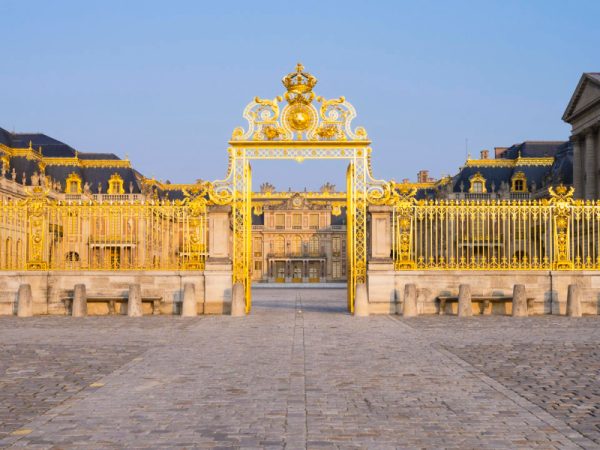
🏰 Day Trip – Palace of Versailles
Just 20 kilometers southwest of central Paris lies one of the most majestic attractions in Paris and beyond—the Palace of Versailles. A symbol of royal opulence, political power, and France’s grand architectural legacy, this UNESCO World Heritage site offers a perfect day trip that unveils the extravagance of the Ancien Régime.
Originally a humble hunting lodge for Louis XIII, the site was transformed by King Louis XIV in the 17th century into an unmatched royal palace, designed to reflect the absolute power of the monarchy. The Hall of Mirrors, stretching 73 meters long, dazzles visitors with its gilded décor, crystal chandeliers, and 357 mirrors reflecting sunlight from the manicured gardens outside. This room also witnessed historic moments—most notably, the Treaty of Versailles, which ended World War I.
The vast Versailles Gardens, designed by André Le Nôtre, cover nearly 2,000 acres and include intricate fountains, sculpted hedges, and peaceful walking paths. Visitors can enjoy musical fountain shows, row boats on the Grand Canal, or simply admire the harmony of nature and design.
Other highlights include the Queen’s Hamlet, a rustic retreat built for Marie Antoinette, and the Grand Trianon, a pink marble palace used for royal leisure. Each corner of Versailles tells a story of extravagance, revolution, and rebirth—making it a top destination for those exploring the history of France.
Though technically outside Paris, the Palace of Versailles is an essential part of any comprehensive Paris itinerary. Easily reachable by RER train or guided tour, this unforgettable landmark reveals the lavish lifestyle of French royalty and the deep historical roots of the nation.